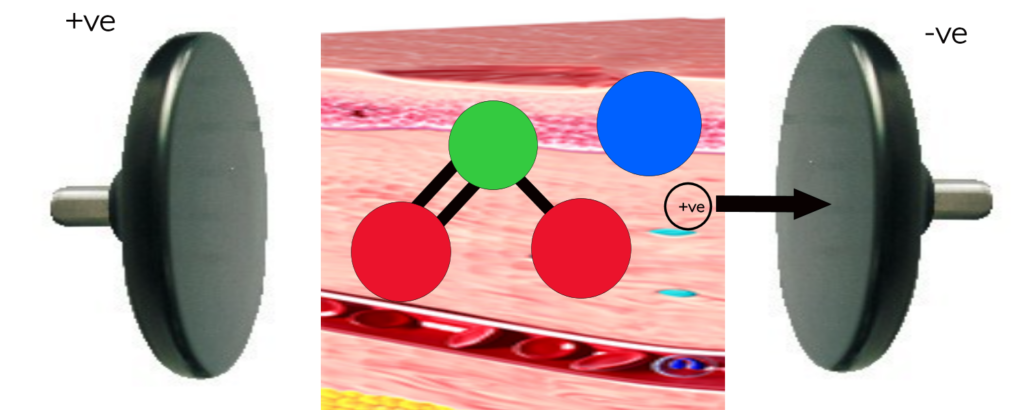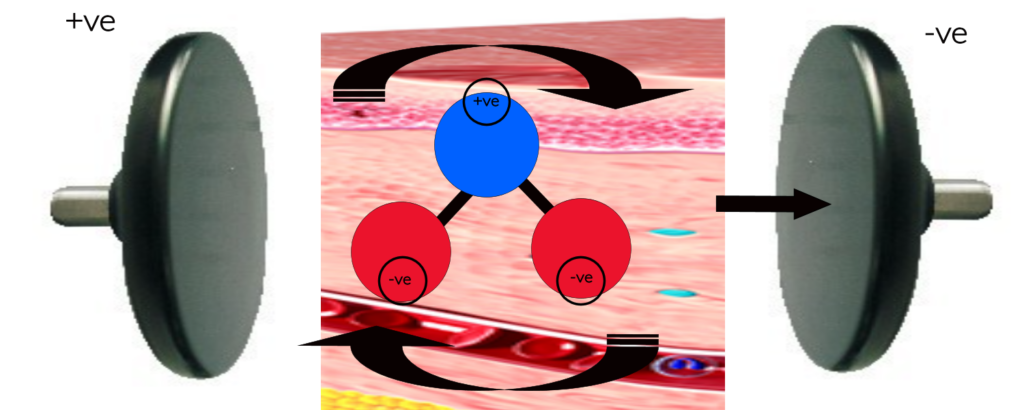At the highest level Foster (2000) said radio frequencies interacted with the body in several main ways:
1. EMF enters the body (the field primarily flows through intra as well as extracellular spaces coupling with the body).

2. Absorbed by the target tissue. (The amount of effect is determined by the level of absorption of the EM energy into the tissues. The amount of absorption is referred to as the specific absorption rate (SAR). SAR is just a numerical representation for the rate at which energy is absorbed by a known tissue and varies by the frequency of the wave and the type of tissue. There is an online calculator for SAR which can be found here last accessed 2021).

3. Response of the tissue (generally catagorised as thermal or non-thermal)

4. Biological response (e.g. increased healing rate, death of cell, decreased neural signaling etc.)
If we look deeper at the effects on a cellular level there are two main components to consider:
1. Ions
Human tissues contain ions (most densely in tissue with fluid in them blood, muscle etc.).
These ions enable the flow of electrical signals through the body.
The four most abundant ions in the body are potassium, sodium, calcium, and chloride.
Ions always contain an electrical charge (either +ve or -ve)
When an electrical field (in this case our radio frequency in the shortwave band) passes into the body the ions move and are accelerated in one direction (a negative ion will move towards a positive field and vice versa).
In the example below, our short wave machine has one positive and one negative plate. The sodium contains +ve charged ions which are attracted to the -ve plates. This moves the ions (sodium is the most prevalent metallic ion in extracellular fluid).

Because our shortwave field alternates, the ions move one way and then the other very rapidly. As they move they collide randomly with adjacent molecules giving up energy.
2. Water
In the human body many of the tissues are largely water based. Water is considered to be electrically neutral. However, water molecules are polar. That means the ends of the molecule carry a small opposite charge. Water as a molecule is not symmetrical, there are more electrons on the oxygen side than on the hydrogen side. Oxygen attracts electrons much more strongly than does hydrogen, resulting in a partial positive charge on the hydrogen atoms and a partial negative charge on the oxygen atom. The presence of such a charge on each of these atoms gives a water molecule a net dipole moment.
When we apply shortwave to water molecules they rotate instead of moving linearly.

This rotational energy disrupts other local molecules causing more motion (and potentially heat).
There are of course molecules that are not charged. These molecules are affected by shortwaves as the oscillating +ve and -ve creates what is known as the electron cloud. This is where charged molecules adjacent to non charged molecules move, which in turn moves the non charged molecules creating the ‘cloud’ effect. This is important in the machine, for example the plastic molecules are non charged so they don’t heat up keeping the machine cool (if the electrodes touch the patient they can become hot through conductive heating so be aware of this). But this effect offers little in the way of treatment to a patient.
The largest effect found from shortwave are:
- Ion movement
- Bipolar rotation